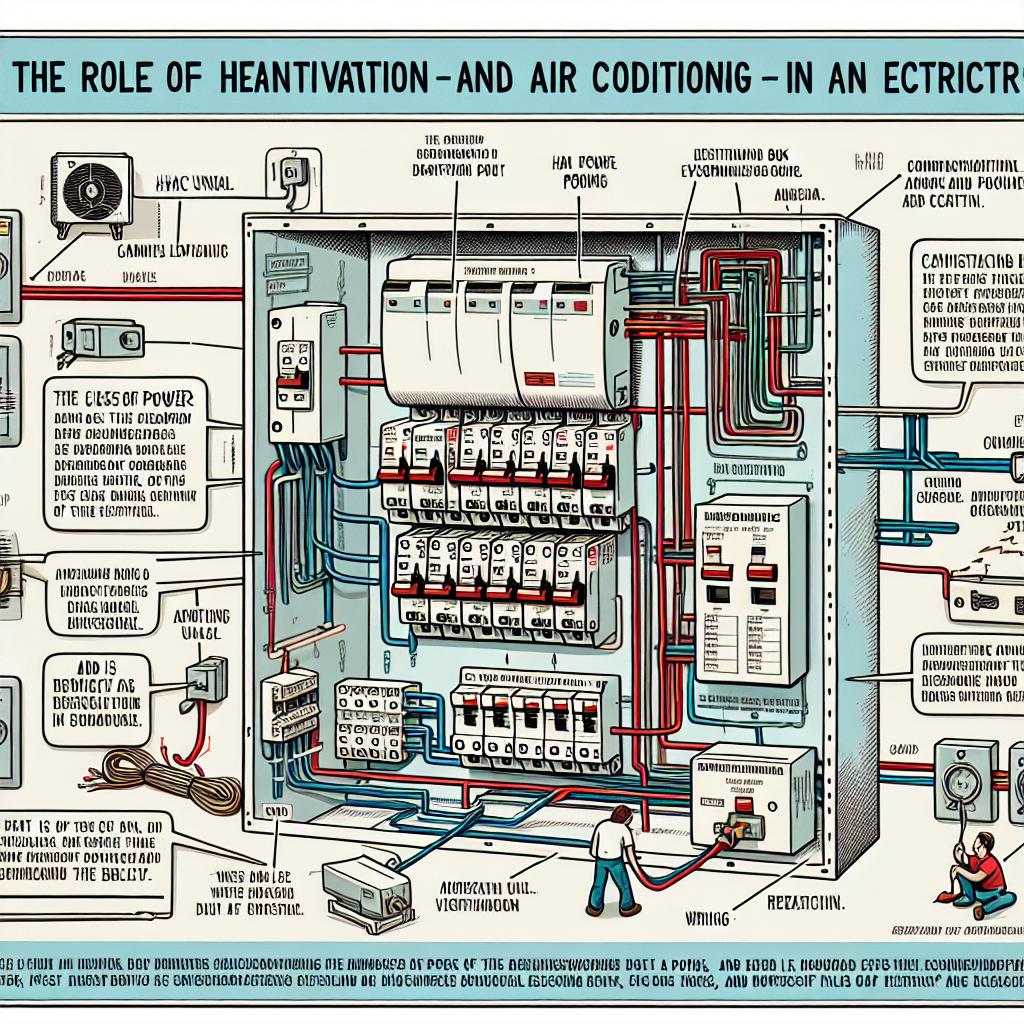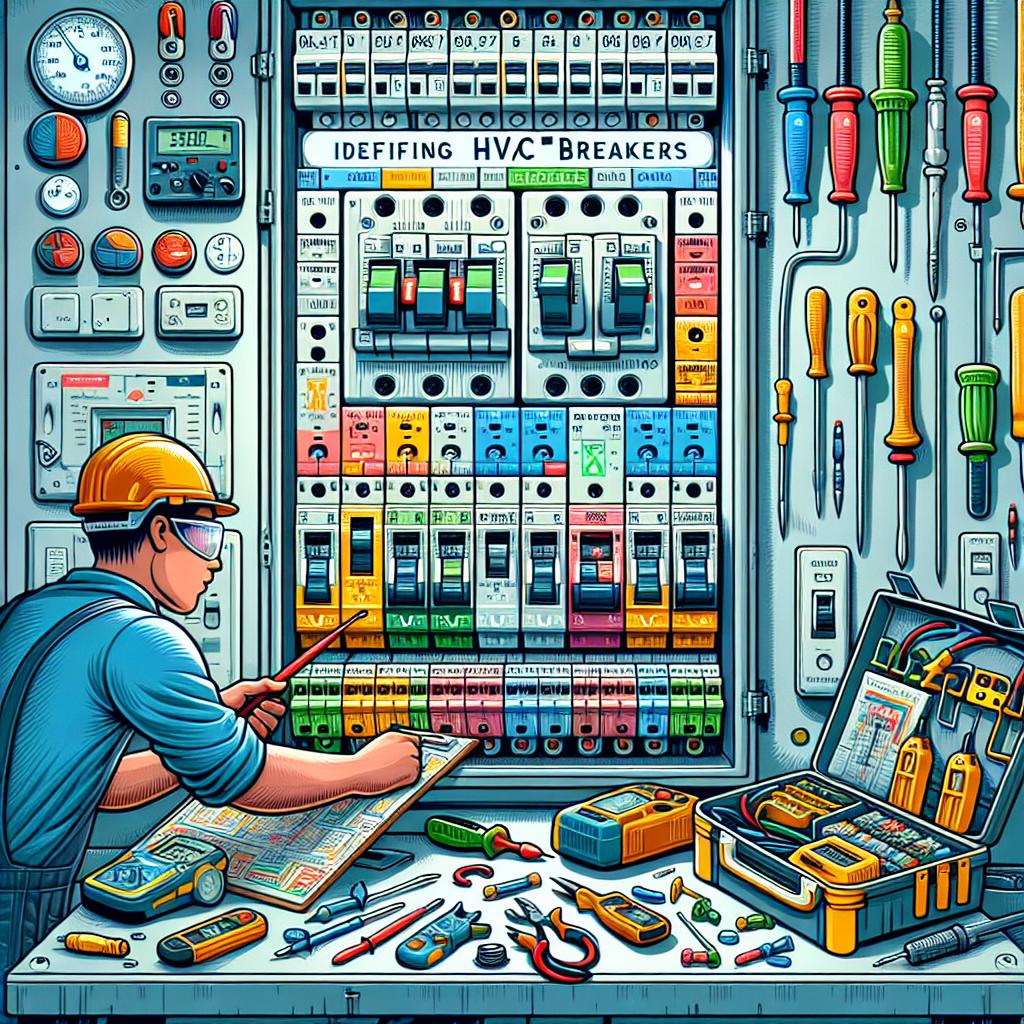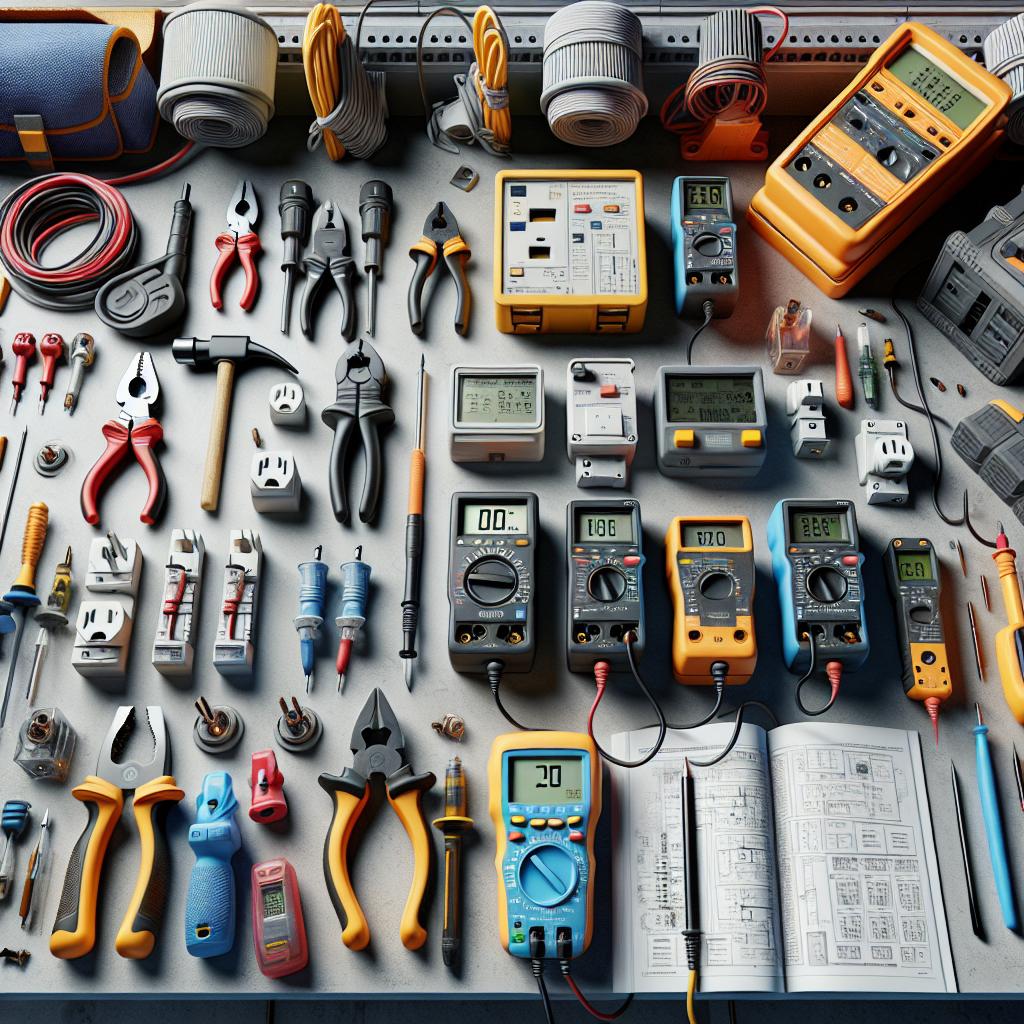When the temperature soars or the chill of winter sets in, our HVAC systems become our lifeline, ensuring comfort and warmth in our homes. Yet, these intricate systems are powered by a complex web of electrical circuits, often hidden from view. Among the unsung heroes of this intricate setup are the HVAC breakers—small but crucial components that safeguard our heating and cooling systems from electrical overloads. Understanding how to identify these breakers can empower homeowners to troubleshoot issues effectively, ensuring their systems run smoothly and efficiently. In this article, we will guide you through the essential steps to locate and recognize HVAC breakers, equipping you with the knowledge to keep your environment comfortable year-round. Whether you’re a seasoned DIYer or a curious newbie, the ability to navigate your electrical panel with confidence is key to maintaining the heart of your home’s climate control.
Understanding the Role of HVAC Breakers in Your Electrical System
HVAC breakers play a vital role in the safety and efficiency of your electrical system. They serve as a protective measure, preventing overloads and short circuits that can lead to severe damage or fire hazards. To identify whether a breaker is dedicated to your heating, ventilation, and air conditioning system, look for specific characteristics. These breakers are typically labeled clearly, often marked with terms like “HVAC”, “A/C”, or even “Heat Pump”. In many cases, they will have a higher amperage rating compared to standard breakers, given the significant power demands of HVAC units.
Upon opening your electrical panel, you should pay close attention to the layout of the breakers. HVAC breakers are often situated closer to the main power source but may also be distinctively colored—red or blue are common indicators. To make identification easier, consider the following tips:
- Check for a label or diagram on the inside of the panel door.
- Look for double-pole breakers, which are necessary for large HVAC systems.
- Inspect the wiring; a thicker gauge is often used for HVAC circuits.

Visual Cues: Spotting HVAC Breakers with Ease
When it comes to identifying HVAC breakers in your electrical panel, visual cues can make the process much smoother. Start by examining the labels on your breaker panel. Most panels will have a diagram or list of circuits that can guide you to the correct breaker. These labels often indicate which breakers control specific appliances, including your HVAC system. If you notice a breaker labeled with terms like “HVAC,” “Heat,” “AC,” or simply “Air Conditioner,” you’ve likely found the right one.
In addition to labels, pay attention to the physical characteristics of the breakers themselves. HVAC breakers are typically larger than regular circuit breakers and may be colored differently. Look for breakers that are distinctly marked or configured differently than your standard breakers. You might also observe a double-pole breaker for your HVAC unit, which helps manage the higher amperage required by the system. Understanding these visual distinctions can significantly enhance your ability to spot the correct HVAC breaker quickly.

Safety First: Precautions When Identifying Breakers
When it comes to identifying HVAC breakers, prioritizing safety is paramount. Before you start working, ensure that you’re wearing appropriate safety gear, including gloves, goggles, and non-conductive shoes. Always turn off the main power supply to the HVAC system to eliminate the risk of electric shock. It’s advisable to double-check with a voltage tester to confirm that there is no live current flowing to the breakers. While on the job, stay cautious and maintain a clean workspace to avoid accidental contact with tools and materials.
In addition to personal protective equipment, it’s vital to follow these precautions when identifying breakers:
- Label the Breakers: Properly label each breaker to avoid confusion during identification.
- Document Breaker Locations: Create an easy-to-read diagram showing where each breaker is located.
- Never Work Alone: Always have someone nearby in case of emergencies.
- Use Insulated Tools: Ensure that your tools are insulated to prevent accidental electrical contact.
| Precaution | Description |
|---|---|
| Wear Protective Gear | Gloves, goggles, and non-conductive shoes to prevent injuries. |
| Power Off | Always shut off the main power before working on breakers. |
| Voltage Testing | Use a tester to ensure no live current reaches the breakers. |

Essential Tools for Efficient Breaker Identification
Identifying HVAC breakers effectively hinges on having the right tools at your side. Multimeters are indispensable for measuring voltage and current, allowing you to confirm that breakers are functioning as they should. Circuit tracers offer a more advanced solution, enabling you to trace the exact path of the wire through the electrical panel, which is crucial when you need to locate specific breakers quickly. Additionally, wire labels can streamline the identification process; by clearly marking each circuit, you prevent confusion and save valuable time when troubleshooting.
Moreover, investing in a handheld thermal imager can help you detect overheating conditions that might indicate a malfunctioning breaker. These devices reveal temperature variations that the naked eye cannot see, providing an advanced way to monitor breaker health. For those who prefer organized data management, consider using a breaker panel reference sheet which details the layout and function of each breaker. This will aid you significantly during maintenance checks. Below is a simple reference table to help with breaker organization:
| Breaker Label | Function |
|---|---|
| 1 | HVAC System |
| 2 | Refrigerator |
| 3 | Lighting |
| 4 | Outlets |
Q&A
Title: How to Identify HVAC Breakers: A Step-by-Step Guide
Q1: What exactly are HVAC breakers, and why are they important?
A1: HVAC breakers are circuit breakers that control the power supply to heating, ventilation, and air conditioning systems. They are essential for protecting your HVAC equipment from overloads and ensuring safe operation. Identifying them helps you troubleshoot issues and perform maintenance correctly.
Q2: How can I locate my HVAC breakers?
A2: HVAC breakers are typically found in your home’s main electrical panel, which is usually located in a basement, garage, or utility room. If you have a separate disconnect switch mounted outside near your AC unit or heat pump, start there. This disconnect looks like a small metal box and will often be the first line of defense for your HVAC system.
Q3: What do HVAC breakers look like?
A3: HVAC breakers can vary in appearance, but they generally have a toggle switch or a push-button design. Look for breakers labeled with terms like “AC,” “Heat,” or the specific model of your HVAC system. Commonly, they will have double-pole breakers that appear thicker than standard single-pole breakers, as they manage higher voltages.
Q4: Is it safe to work with HVAC breakers?
A4: Safety is paramount when dealing with electrical systems. Always turn off the main power before working on any breakers, and consider using insulated tools. If you’re unsure or uncomfortable, it’s best to consult a licensed electrician. Remember, safety first!
Q5: What are the common signs of an HVAC breaker issue?
A5: If your HVAC system isn’t operating, or you notice that it frequently trips the breaker, these could be signs of an issue. A burnt smell, flickering lights when the HVAC kicks on, or unusual noises may also indicate trouble. Recognizing these signs early can save you from more severe damage down the line.
Q6: How can I reset an HVAC breaker?
A6: First, locate the breaker box and identify the HVAC breaker (look for the correct label). Gently push the breaker switch all the way to the OFF position, then back to the ON position. If it trips again immediately, there’s an underlying problem that needs addressing; do not continue to reset it without investigating further.
Q7: When should I consider calling a professional?
A7: If you regularly find yourself resetting the HVAC breaker, experience ongoing issues with your HVAC system, or feel unsure about handling electrical components, it’s best to call a qualified HVAC technician or electrician. They can diagnose the problem accurately and ensure safe repairs are made.
Q8: Can proper identification of HVAC breakers help in energy efficiency?
A8: Absolutely! Knowing which breaker controls your HVAC allows you to manage its operation more effectively. By optimizing settings, scheduling regular maintenance, and minimizing use during peak hours, you can enhance your system’s efficiency and potentially reduce energy costs.
Final Thoughts: Identifying HVAC breakers is a crucial skill for homeowners. Understanding their function, recognizing their location, and knowing when to seek help can lead to better maintenance of your heating and cooling systems, promoting both safety and efficiency.
To Conclude
As we conclude our exploration of identifying HVAC breakers, it’s clear that understanding the nuances of your electrical system not only enhances your knowledge but also ensures the safety and efficiency of your home’s climate control. From familiarizing yourself with the panel layout to recognizing the telltale signs of a malfunctioning breaker, each step you take empowers you to manage your HVAC system with confidence.
Remember, being proactive in your maintenance will save you time, money, and potential headaches down the road. Whether you’re troubleshooting an issue or simply performing routine checks, your newfound skills will serve you well. So, step boldly into your electrical panel with clarity and precision, and take control of your comfort. After all, a well-informed homeowner is the best protector of their sanctuary. Stay curious, and until next time, keep the air flowing!

